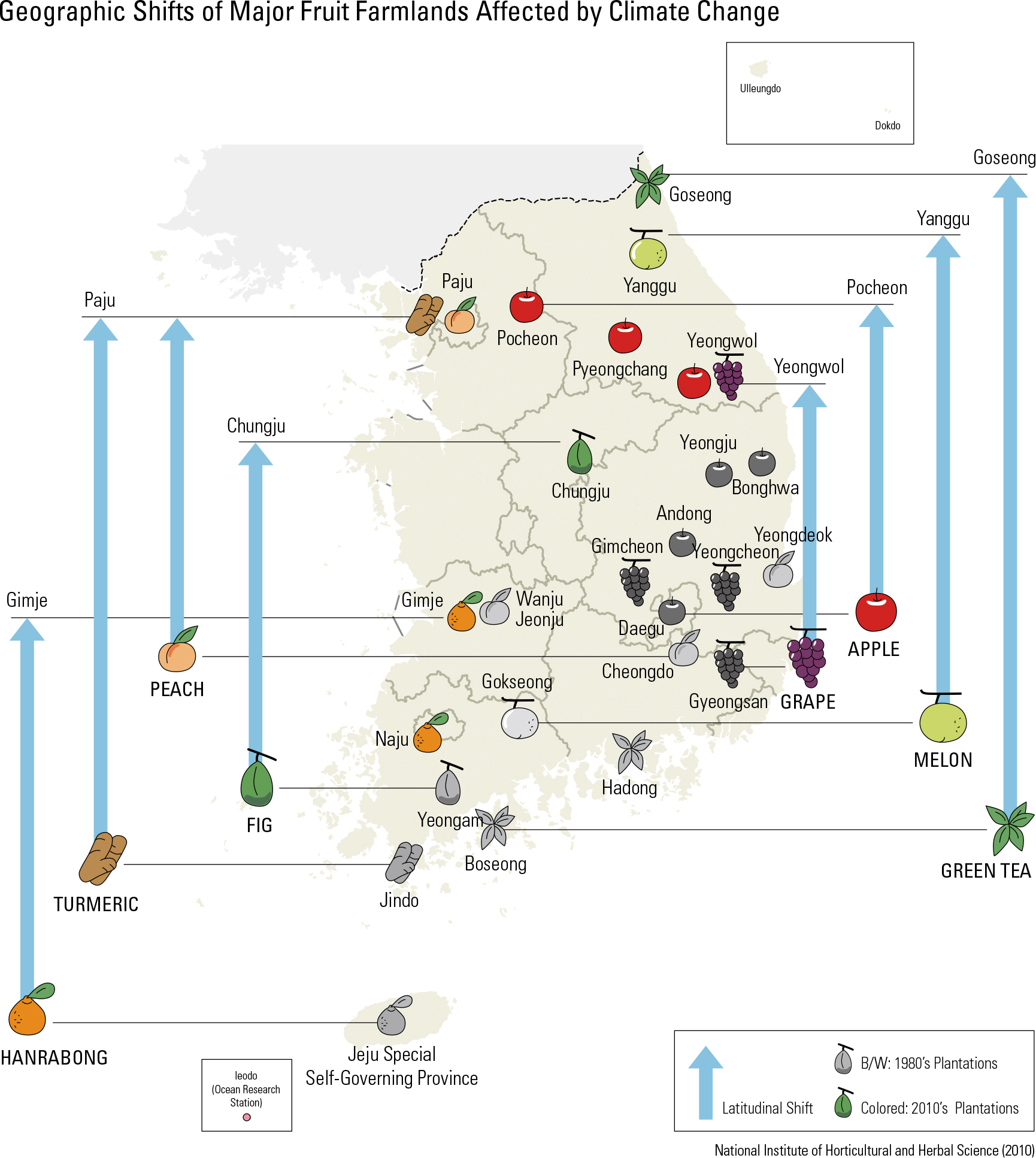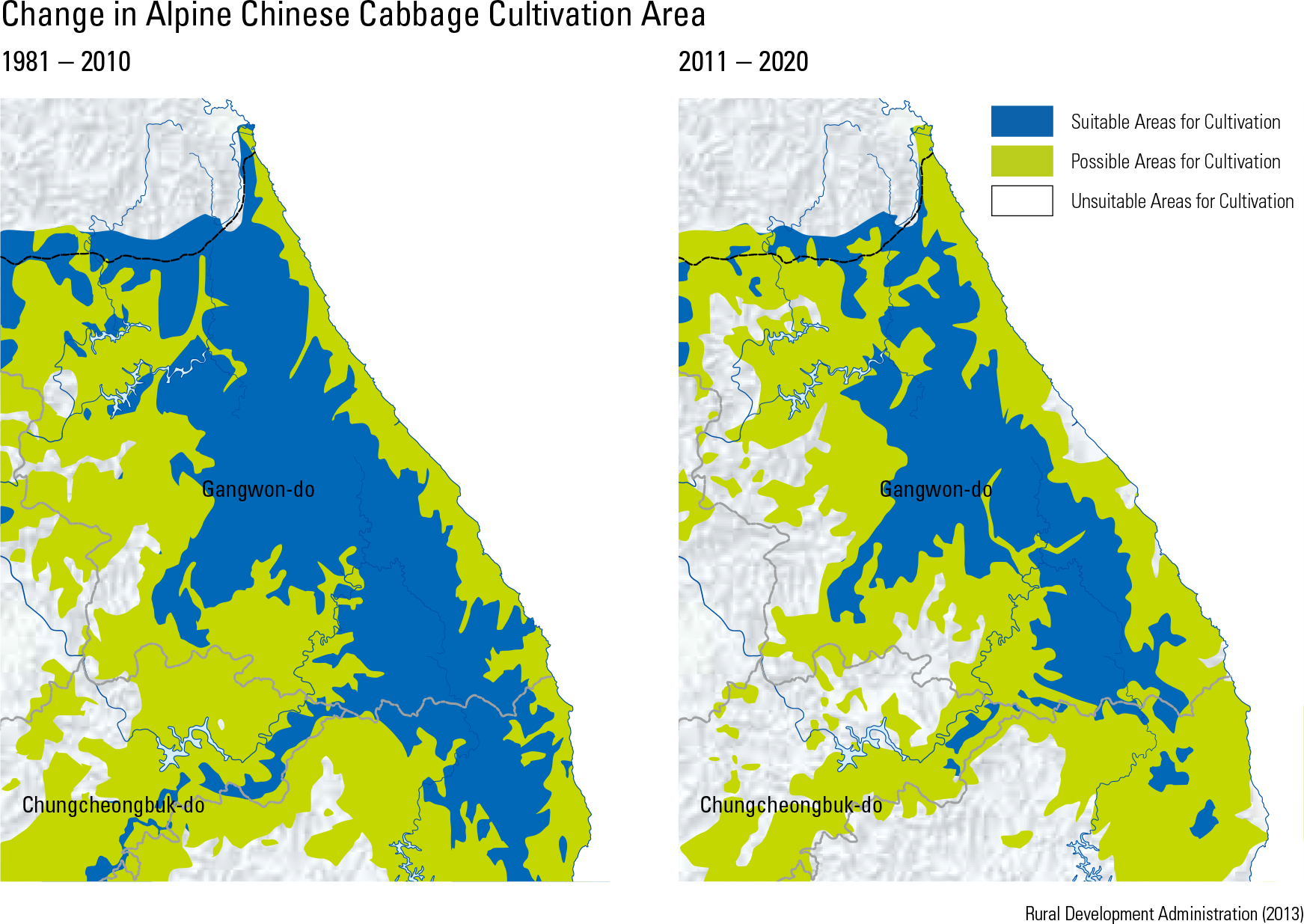English II
Average global temperature has increased by about 0.7 ̊C over the last century, and Korea has experienced double that rate of increase (1.5 ̊C) during the same period. If this trend continues, the country is expected to have a 6.0 ̊C increase in annual mean temperature and 20.4% more an- nual precipitation by 2099. An appropriate indicator of Korea's temperature shift is the northward movement of major crops. Subtropical fruits such as tangerines and Hanra- bong (local specialties of Jejudo) were usually only produced on the island. However, they can now be grown in areas such as Gimje-si, Go- heung-gun, and Cheongju-si, while Jejudo now produces tropical crops like mango, dragon fruit, papaya, and sugar apple. Similarly, apple planta- tions have moved north from Daegu to Pocheon- gun, grapes to Yeongwol-gun, figs to Cheongju- si, and peaches to Paju-si. Climate change is not only changing the plantation pattern of Korea, but is also posing potential threats to food security such as plant diseases and insects. Even the active highland farming areas in Gangwon-do are pre- dicted to decrease as well. In order to mitigate the impacts on agricultural sectors caused by possible climate changes, the Korean government is developing various poli- cies for establishing adaptive plans such as long- term regional agricultural and farming plans. New crops have been introduced, and various resource crops in subtropical/tropical regions have been collected through scientific collaboration with overseas countries. Scienti c diagnosis and eval- uation of the impacts of climate change on the agricultural sector are important in establishing future visions of the agricultural industry and the direction of its policies.
page_2 |



